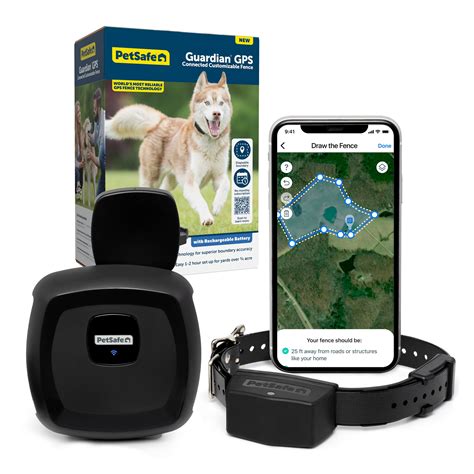Introduction

GPS dog fences, also known as invisible fences, are electronic systems designed to keep your dog contained within a designated area without the need for a physical barrier. They use GPS technology to track your dog’s location and deliver a harmless correction if they stray outside the set boundaries.
How does a GPS dog fence work?
A GPS dog fence system typically consists of a transmitter, a receiver collar worn by your dog, and boundary flags. The transmitter emits a radio signal that creates a virtual boundary around your property. The receiver collar uses GPS technology to determine your dog’s location relative to the boundary. If your dog crosses the boundary, the collar will deliver a correction, such as a beep or vibration, to deter them from leaving the designated area.
What are the benefits of using a GPS dog fence?
- Freedom without boundaries: GPS dog fences allow your dog to roam freely within the designated area without being confined to a physical barrier.
- Increased safety: By keeping your dog contained, GPS fences prevent them from wandering off, getting lost, or encountering potential hazards outside your property.
- Convenience: Unlike traditional physical fences, GPS fences do not require digging, installation, or maintenance, making them a more hassle-free option.
3 Common FAQs About GPS Dog Fences
1. Are GPS dog fences safe for my dog?
Yes, GPS dog fences are generally considered safe for dogs. The corrections delivered by the receiver collar are typically harmless and designed to deter your dog from leaving the designated area. However, it is important to note that some dogs may be more sensitive to the corrections than others. It is recommended to start with a low correction setting and gradually increase it as needed.
2. How large of an area can a GPS dog fence cover?
The coverage area of a GPS dog fence depends on the specific model and transmitter. Some systems can cover areas up to 100 acres, while others may be limited to smaller yards. It is important to select a system that meets the size of your property and the roaming range of your dog.
3. Can GPS dog fences be used for multiple dogs?
Yes, many GPS dog fence systems support multiple receiver collars, allowing you to use the same system for up to four or more dogs. This makes them a cost-effective solution for households with multiple pets.
How to choose the right GPS dog fence for your needs
When choosing a GPS dog fence, consider the following factors:
- Size of your property and the roaming range of your dog: Determine the coverage area required for your needs.
- Number of dogs you need to contain: Choose a system that supports multiple collars if necessary.
- Correction options: Select a system that offers different correction levels to accommodate the sensitivity of your dog.
- Waterproof and durability: Choose a system designed to withstand outdoor conditions and the wear and tear of active dogs.
The Future of GPS Dog Fences
GPS dog fences are becoming increasingly sophisticated and user-friendly. Some of the latest advancements include:
- GPS tracking with smartphone integration: Many systems now allow you to track your dog’s location and monitor their activity through a mobile app.
- Geofencing: GPS fences can now be integrated with geofencing technology, allowing you to create virtual boundaries within specific areas, such as a park or a hiking trail.
- Smart collars with health monitoring: GPS dog fences are evolving into smart collars that can monitor your dog’s health and activity levels, providing valuable insights into their well-being.
Conclusion
GPS dog fences offer a safe and effective way to keep your dog contained without the need for a physical barrier. By understanding the benefits and considerations involved in choosing a GPS dog fence, you can make an informed decision that meets your needs and ensures your dog’s well-being. As technology continues to advance, GPS dog fences will become even more versatile and convenient, offering a comprehensive solution for pet containment and safety.





















